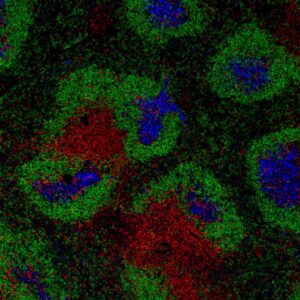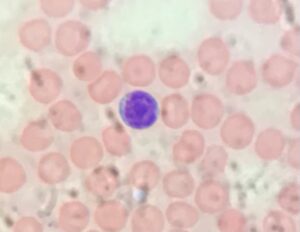Let’s say you were walking on the street and as your colleague crossed you she said “Good Morning!”… Sorry to break the news, but it might not be such a good morning for you. That is because, unfortunately, your colleague was infected. Yes, she was carrying a virus and as she talked, little droplets left her mouth and hit your skin. A few minutes later you touched the contaminated area and… touched your mouth.
Realistically, we do know when we will be placed in a situation similar to the one described above, as we can’t really see a virus with our naked eyes. However, now is the time for us to understand how exactly we are able to fight such microorganisms. We need to understand how our internal built-in mechanism of defence works, so we can comprehend why it is so crucial for us to comply with the different layers of safety that have been implemented in the past few months.
In this post, I will present to you our first line of defence, also called Innate Immunity. These are the first steps that take place right after you are exposed to a foreign invader. This initial immune response is essential to help us stay healthy. But before I explain to you how this happens, let’s first take a step back…
SARS-COV-2 virus particles (pseudo-coloured yellow) emerging from apoptotic cells (pseudo-coloured red) cultured in the lab. Imagine taken by scanning electron micrograph. Credit: NIAID
Where do I find microorganisms?
I want you to take a moment to think about how many different microorganisms (such as bacteria, viruses and fungus) you encounter daily. Let’s start at the beginning. When your alarm goes off in the morning and you touch your phone to stop the annoying sound… There, microorganisms on your phone. When stepping out of your bed and walk to the bathroom, your floor has microorganisms. Even if you are a “clean freak” your bathroom is also full of them. The kitchen, your skin, the air. The list goes on.
Look, my goal is not to freak you out. It is completely fine to have these bugs everywhere. We have survived and evolved all these years coexisting with many different microorganisms. But you might ask: how, Stefanie? How is it possible that I’m encountering all these foreign microbes since I was a baby and I’m still healthy? Well… since you asked, let’s dive deep into the first layer of defence of our immune system. Get ready to be amazed!
Our natural barrier
When we think about how to protect ourselves, the first thing that might come to our mind is having a barrier. That are many different barriers that do such job like our house, our jackets, and our shoes. But to protect the “inside of our body” we have our skin!
If we had extremely powerful eyes (superhero type of vision) we probably would see many different microorganisms right now on our skin. However, this barrier prevents their entry. Sometimes our skin can get damaged, when we cut ourselves, for example, allowing pathogens (microorganisms that cause diseases) to have access to the “inside” of your body.
There are also parts of our body that are “open”, such as the mouth and eyes. Although this open access is essential for our body to function properly, such regions are the perfect entryway for foreign agents. That is why our skin is not enough to protect us, but it does a very good job! Let’s not imagine how we would look like without such an amazing barrier, but you can think about how this hypothetical situation would increase the surface area for pathogen entry.
Now that we know that we are always in contact with microorganisms, it is inevitable that some of them will find a way to enter our bodies. At this point, our immune system has to be able to recognize and remove them very fast. But how does our body know what they look like?
Friend or enemy?
If you are a little bit like me, you have already wondered how soldiers were able to recognize friends from enemies during a war. Every single time I watch a war movie is the same. All I can think is that there are a lot of people and little time to figure out who is on your side and who is not.
But here is the catch. The most important thing to know is the uniform colours and patterns. You don’t need to know the name of every single one of your “enemies”. As long as you can recognize that they are wearing a different uniform from yours, then you know they are not on your team.
As crazy as it might sound, our innate immune system utilizes a similar process to tell non-self (foreign invaders) to self (our own cells). There are specific molecules and structures that are common to many pathogens, but not to our own cells. Therefore they are considered as the “enemy uniform”. As soon as our innate immune system recognizes such structures, it knows it needs to remove it.
Once recognition occurs, our innate immune cells can target the foreign agent for removal.
One way to accomplish this is by performing phagocytosis (don’t worry about the hard words, let’s focus on the concepts). This is a process in which specialized cells are able to “eat” the foreign invader, degrading it.
There are also powerful molecules that are part of our innate immune system called antimicrobial peptides. These molecules are able to act in a broad spectrum to disrupt the structure of different microorganisms. Again, by targeting structures not found in our own cells. Together the innate immune system is able to act very fast with the goal of removing any pathogen it encounters.
Decrease exposure!!!
Sounds amazing, right? Well, there is always a catch. Remember the situation of your infected colleague I presented at the beginning of this post? Imagine that if instead of saying only a sentence to you, you both talked for a long period of time. Do you see the issue?
One thing that we have to keep in mind is that as amazing as our first line of defence is, having to deal with a few virus particles is very different than having to deal with A LOT of virus particles.
What I want to focus on is that we should understand that one single particle of virus or bacteria probably won’t make us sick. However, our immune system can only handle so much. And that is the reason why we have to decrease possible exposure!
We have to think about situations in which we would only encounter only a few virus particles (if any). That would involve being outside while social distancing, for example. Being inside, in a small restaurant… well, that really increases the possibility for higher exposure! Moreover, just like our skin acts as a great barrier to stop foreign invaders, we know that masks are also a great barrier to our “open areas” (our mouth AND NOSE).
Is one layer of safety enough?
Our immune system has many… many different layers of safety, which together help us stay healthy. That means that if we encounter a foreign invader, we can utilize one mechanism to remove it. However, if this mechanism fails, we have a second one to try to do the job. And a third, if the second also fails, etc.
This strategy can be observed everywhere! Can you imagine the many different layers of safety an airplane has? If the first layer fails, another one will kick in to ensure the wellbeing of all passengers. It is not because you have one great safety feature that you will remove all the others! Agreed?
That is why we should follow a similar strategy! It is not because you have a mask on that you can skip the other layers. Social distancing, when possible, needs to be maintained even if you have a mask on. Why? We are focusing on decreasing exposure, minimizing the number of possible viral particles that can reach us. This way we give a chance to our immune system to battle the few viruses we may encounter.
At the same time, it is CRUCIAL for us to understand that some people don’t have their immune system working as well as we do. Let’s say that last week you encountered 1,000 virus particles (hypothetical number, for didactics only). Your immune system kicked in, recognized and removed the virus and you did not get sick.
Someone else (which could be the person next to you on the metro) might have a medical condition that makes their immune system weaker. So, 1,000 virus particles for this person might actually be WAY too many for their immune system to handle. And that is why this person also depends on your layer of protection (social distancing/masks) to stay healthy.
Now that you know how your immune system acts as you first encounter a foreign invader, you understand why you need to focus on decrease exposure. So, complying with not one, but all the levels of safety recommended by the health agency of your country is essential. I know our immune system is awesome, but we have to help it help us!
Stay safe and think: decrease exposure!
From your Immunologist (FYI),
Stefanie Valbon




One Response
I don’t think the title of your article matches the content lol. Just kidding, mainly because I had some doubts after reading the article.